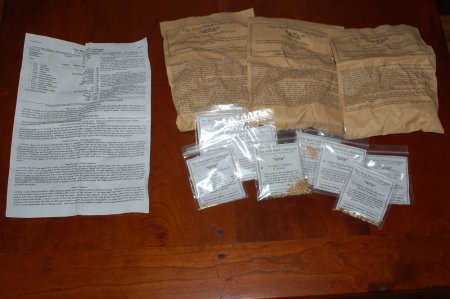GRAIN recently published an article about the politics of certified organic seeds.
While every country has a slightly different interpretation of the rule, generally speaking, certified organic food must be grown with certified organic seeds when they are available.
This sounds innocent enough, even logical to some people. As innocent as it sounds it’s a really insidious rule that makes things very difficult for some small farmers and decreases global biodiversity.
No Significant Difference
While no one should use treated seeds in their garden, and organic foods certainly should not be grown from treated seeds, the use of organic seeds doesn’t make any sense.
The root of the definition of certified organic is the plants should be grown on land that has not come in contact with chemical fertilizers and pesticides for two years. By the time you purchase and grow any seed in your garden, two years will have almost certainly passed since the parent plant could have been sprayed anyway.
If you are purchasing an OP or heirloom variety of plant, there is a reduced chance pesticides or other chemicals would have been used in it’s production. This is because a large portion of the chemicals used in agriculture are used to make produce appear cosmetically perfect or to protect it from spoilage. These chemicals aren’t needed when seed is produced. This doesn’t apply to F1 hybrid varieties, for which toxic chemicals are frequently used, and presumably these chemicals are allowed under organic certification because organic F1 seeds are widely available.
The chance of transporting chemicals of any significance into your garden or dinner table with an untreated purchased seed is infinitessimally small. First the original plant has to be sprayed, then the chemical must find it’s way to the very small seed, then the seed decomposes in your garden leaving a new plant in it’s place. It’s virtually impossible any chemical residue could be left behind that is any higher than what’s already present in your garden anyway. If you add supermarket vegetable scraps to your compost, you have a much greater chance of adding chemicals to your garden than using non organic seeds.
There is no possibility organic seeds can produce better plants. When you grow a seed, you are simply using it’s DNA. If a seed germinates and grows into a plant, that plant will be the same regardless if it came from an organic seed or not. There are simply no realistic possibilities for any differences to exist.
If you save your own seeds and trade with your fellow gardeners, the idea of organic seeds becomes a non-issue anyway. This is one more reason why we should all be doing this.
No Big Favors to the Environment Either
Of course one of the reasons many people buy organic foods is to help protect the environment. As anyone who has ever saved their own seeds will tell you, the amount of seeds that comes from a single plant is enormous. You can easily plant one seed and get thousands as a result.
Seed production is not as chemically intensive as producing market produce anyway, and the amount of land needed is a tiny fraction of that used in agriculture.
How Could Organic Be Bad?
The problem comes about in the interpretation of the rule ‘organic seeds must be used, when available’.
In North America many smaller seed companies specializing in OP and heritage varieties, knowing they could soon be shut out of the chain of organic agriculture if they didn’t, have been arranging their own organic certifications. This means in this part of the world organic seeds are widely available for most of the common OP and heirloom varieties. Probably for this reason, the certifying agencies have not been very strict about requiring the use of organic seeds.
In Europe and many other places in the world, it’s a very different story.
In Europe there are a very complicated set of rules governing the production of seeds for agriculture. In particular purchased seeds must come from a licensed source and generally can only be modern commercial varieties. Under limited circumstances, farmers are allowed to save their own seeds, but never to sell or trade them. For farmer grown seeds to be considered organic they must have been grown for two consecutive years first. It’s virtually impossible under realistic circumstances for farmers to maintain their own collections of seeds for their own varieties. If farmers can’t maintain their own seed collections, most heritage and OP varieties cannot be purchased as certified organic.
What’s happening in Europe right now, and the Netherlands was singled out by the GRAIN report above as being one of the worst offenders, is certain classes of crops are being closed when it comes to considering if organic seed is unavailable.
For example, the organic certifying agencies might simply say there are enough certified organic cauliflower seeds on the market, so no organic farmer can claim they can’t find certified organic cauliflower seeds. No arguments are accepted over the varieties available or the price seed companies are asking. Farmers who want to grow organic cauliflower must either have saved their own seeds for the past two years or purchase organic seeds from one of the companies selling them. There would be no other possibilities.
Who are these companies selling the organic seeds?
Referring to the Netherlands in particular, since this was addressed in the GRAIN report, one company called Vitalis controls 82% of the market for organic cauliflower seeds.
In each one of these classes of crops being closed for consideration of organic seeds not being available, only a small number of large companies control the seed market, leaving them in a position to charge virtually whatever they want.


